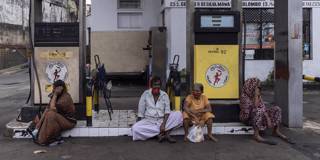Averting Debt Disaster in the Developing World
In August 2021, the International Monetary Fund approved a large allocation of its reserve asset, special drawing rights, which were distributed to member countries in proportion to their quota shares. If used wisely, these funds can go a long way toward supporting highly indebted developing countries.

BEIJING – Many developing countries are teetering on the edge of a debt crisis, with the COVID-19 pandemic, soaring food and energy costs, and the monetary tightening of major economies all threatening to push them over. But the international community has yet to do what is necessary to pull at-risk countries back from the brink.